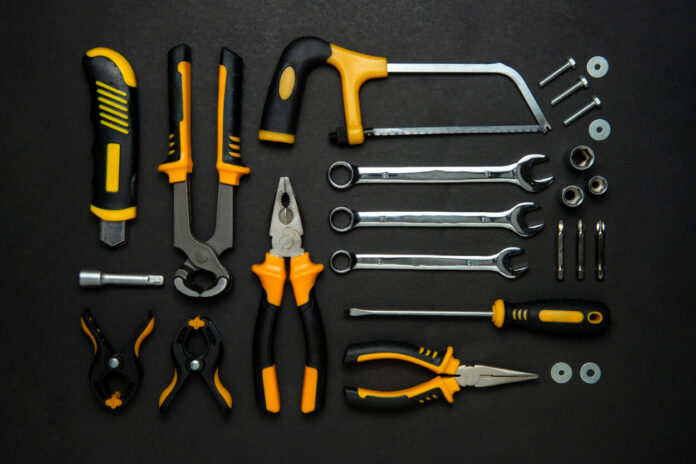In the bustling world of industry, where precision meets productivity, hand-held tools remain the unsung heroes of daily operations. These manual implements—wielded by skilled hands across manufacturing floors, construction sites, and maintenance facilities—form the backbone of professional workmanship. Whether you’re a seasoned professional looking to upgrade your arsenal or a purchasing manager seeking to equip your team with reliable equipment, understanding hand-held tools is essential for operational success.
Hand-held tools are manually operated implements designed to perform specific tasks without requiring external power sources. They harness the user’s physical strength and dexterity to cut, shape, fasten, measure, or manipulate materials across various industrial applications. Unlike their powered counterparts, these tools offer unparalleled control, precision, and reliability in environments where electricity may be unavailable or impractical.
What are the categories of handheld tools and their common applications
The world of hand-held tools is wonderfully diverse, with each implement designed to solve specific challenges across industries. Let’s explore the essential categories that form the foundation of any professional’s toolkit:
- Wrenches come in numerous variations, each serving distinct purposes.
Combination wrenches feature both open and box ends for versatility, while adjustable wrenches provide flexibility across different fastener sizes. For the maintenance technician troubleshooting machinery on a production line, a quality torque wrench becomes indispensable when specific tension requirements must be met. As one maintenance supervisor once told me, “A good wrench is like a firm handshake—it creates a connection you can trust.” - Screwdrivers remain among the most frequently used tools across industries.
From the ubiquitous Phillips and flathead varieties to the specialized Torx and hex drivers, these tools transfer rotational force with remarkable efficiency. Electronics manufacturers rely heavily on precision screwdrivers with ergonomic handles that allow technicians to work for hours without fatigue. The right screwdriver can mean the difference between damaging expensive equipment and executing flawless assembly. - Pliers extend the capabilities of human hands, providing gripping power, cutting ability, and manipulation of materials that would otherwise be impossible.
Lineman’s pliers serve electrical professionals with their robust cutting edges and gripping surfaces, while needle-nose pliers enable access to confined spaces that would otherwise remain unreachable. For the aircraft maintenance technician working in tight engine compartments, a quality pair of snap-ring pliers can transform a frustrating task into a simple operation. - Measuring and Layout Tools ensure precision across all industries.
From the humble tape measure to sophisticated digital calipers, these tools provide the foundation for accuracy. A construction foreman once remarked, “Measure twice, cut once isn’t just an old saying—it’s the difference between profit and loss on most projects.” The professional who invests in quality measuring equipment invariably produces superior results. - Cutting Tools include everything from utility knives to specialized shears and saws.
The sheet metal worker wielding a pair of aviation snips and the carpenter with a Japanese pull saw both understand that the right cutting tool combines precision with efficiency. These tools become extensions of the craftsperson’s intent, translating vision into physical reality. - Hammers and Striking Tools deliver controlled force when needed.
The different head designs—from ball-peen to dead blow—address specific applications across metalworking, woodworking, and general assembly. As one tool and die maker put it, “Sometimes persuasion requires a gentle tap, and sometimes it needs a decisive blow—knowing the difference is what makes you a professional.”
Key Considerations When Selecting Quality Hand-Held Tools
Making wise investments in hand tools requires understanding several critical factors that separate exceptional implements from mediocre ones: Material Composition, Ergonomic Design, Durability Indicators, Precision and Tolerances, Brand Reputation.
Material composition forms the foundation of tool performance. High-carbon steel delivers superior hardness and edge retention for cutting tools, while chrome vanadium offers strength and corrosion resistance in wrenches and sockets. Premium manufacturers employ specialized heat-treating processes that balance durability with toughness.
Modern ergonomic design prevents repetitive strain injuries through thoughtful placement of cushioned grips, balanced weight distribution, and handles that conform to natural hand positions. As one automotive technician noted, “At the end of a ten-hour shift, my hands tell the difference between good and great tools.”
Durability indicators like full-tang construction, forged metal components, and seamless material transitions help evaluate long-term value. Quality tools manufactured to tight precision tolerances deliver consistent performance in demanding environments—preventing common problems like rounded fastener corners and stripped threads.
Brand reputation provides valuable selection guidance. Established manufacturers with industrial track records maintain consistent quality standards and superior after-sale support. While emerging brands may offer innovation, their performance remains untested in harsh conditions. As one procurement director stated, “When production depends on tools performing reliably, the proven choice usually represents the better value.”
Maintaining Your Hand-Held Tools: Professional Tips to Extend Tool Life
Professional tool maintenance is crucial for maximizing performance, ensuring safety, and extending service life. Regular cleaning prevents debris accumulation and material degradation, particularly in joints and cutting edges where residue collects. One veteran machinist credits daily five-minute cleaning routines with saving thousands in replacement costs over decades.
Proper lubrication keeps moving parts functioning smoothly while creating protective barriers against moisture. Different mechanisms require specific lubricants—penetrating oils for pivots, dry lubricants for precision components, and protective waxes for exposed metals. Implementing a maintenance schedule prevents overlooking tools until problems develop.
Strategic storage in quality tool chests with fitted compartments prevents tool-to-tool contact damage, while climate control minimizes rust-causing humidity. Regular preventive inspections identify potential failures before they become safety hazards—checking handles for cracks, edges for chips, and moving parts for excessive play. When wear becomes evident, timely reconditioning through sharpening, part replacement, or professional servicing can restore functionality at a fraction of replacement cost.
-> Go Browse Our Product Catalog
Others Also Interested
- Which basic hand-held tools should beginners prioritize?
New professionals should focus first on versatile basics: a quality adjustable wrench, screwdriver set with interchangeable bits, needle-nose pliers, utility knife, tape measure, and claw hammer. These fundamentals handle approximately 80% of common tasks across industries while building mechanical familiarity that guides future specialized purchases.- What are the noticeable differences between high-quality hand-held tools and low-priced ones in use?
Premium tools typically demonstrate superior fit and finish, consistent performance under stress, and significantly longer service life. Quality becomes apparent through precision machining, balanced weight distribution, and comfortable operation during extended use. While economy tools may perform adequately for occasional applications, professionals quickly notice reduced accuracy, premature wear, and increased user fatigue.- What is the correct way to store hand-held tools?
Store tools in dry environments away from extreme temperatures. Organize them in purpose-designed storage systems where each tool has a designated place, preventing contact between metal surfaces. For precision instruments, consider dedicated protective cases. Clean tools thoroughly before storage, applying appropriate protective coatings to prevent corrosion during inactive periods.- How to determine when hand-held tools need replacement?
Replace tools when they show signs of structural damage, excessive wear affecting performance, or when repair would exceed 50% of replacement cost. Warning indicators include cracked handles, deformed working surfaces, excessive play in moving parts, or inability to maintain calibration. Safety-critical tools require more stringent evaluation standards than general-use implements.- What emergency hand-held tools do professionals usually prepare in their toolbox?
Experienced professionals typically maintain a compact emergency kit including multi-bit screwdrivers, adjustable wrench, locking pliers, utility knife with spare blades, electrical tape, and a compact flashlight. This combination addresses the most common urgent situations while occupying minimal space in service vehicles or facility maintenance areas.



